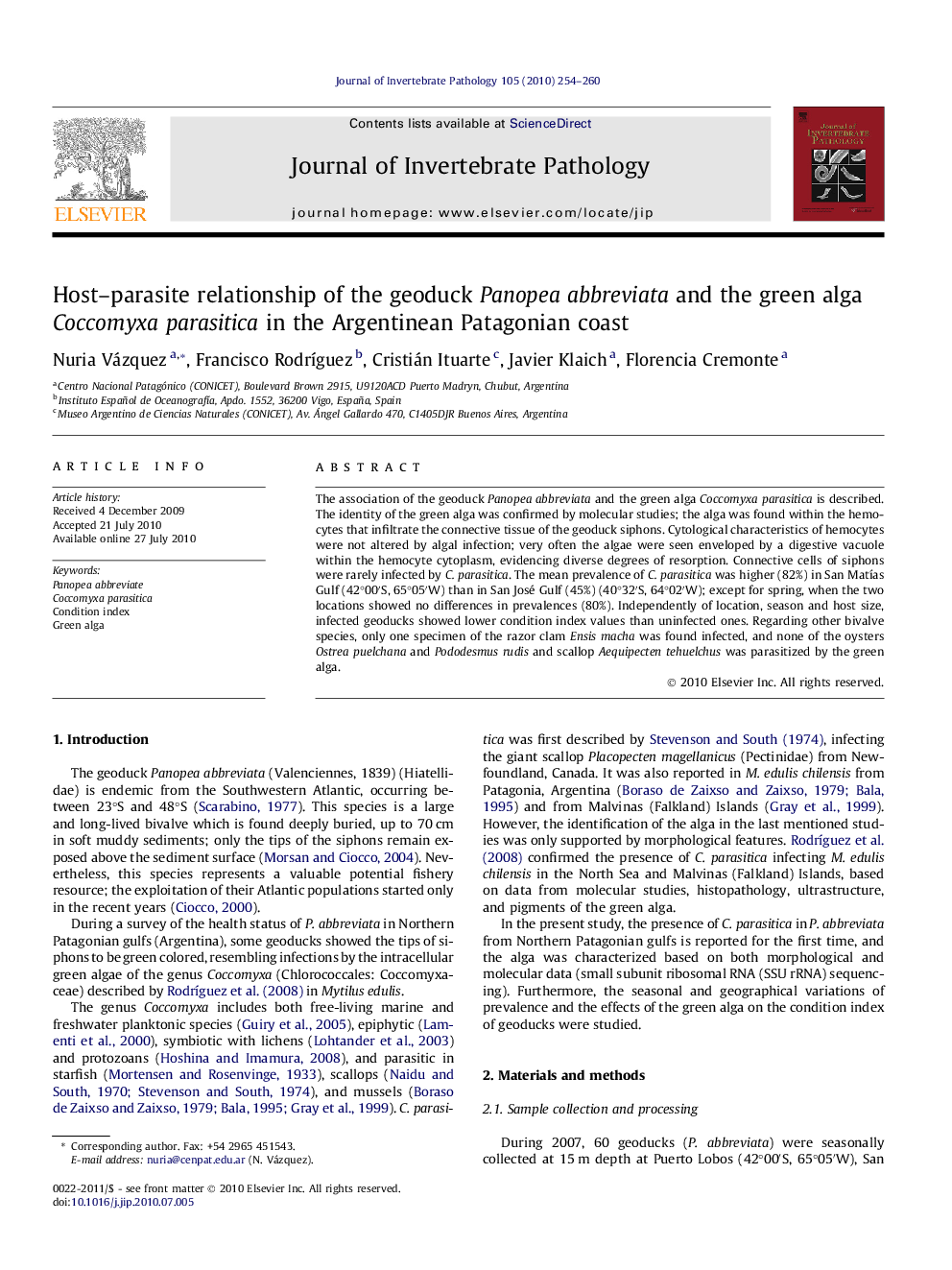| Article ID | Journal | Published Year | Pages | File Type |
|---|---|---|---|---|
| 4558168 | Journal of Invertebrate Pathology | 2010 | 7 Pages |
The association of the geoduck Panopea abbreviata and the green alga Coccomyxa parasitica is described. The identity of the green alga was confirmed by molecular studies; the alga was found within the hemocytes that infiltrate the connective tissue of the geoduck siphons. Cytological characteristics of hemocytes were not altered by algal infection; very often the algae were seen enveloped by a digestive vacuole within the hemocyte cytoplasm, evidencing diverse degrees of resorption. Connective cells of siphons were rarely infected by C. parasitica. The mean prevalence of C. parasitica was higher (82%) in San Matías Gulf (42°00′S, 65°05′W) than in San José Gulf (45%) (40°32′S, 64°02′W); except for spring, when the two locations showed no differences in prevalences (80%). Independently of location, season and host size, infected geoducks showed lower condition index values than uninfected ones. Regarding other bivalve species, only one specimen of the razor clam Ensis macha was found infected, and none of the oysters Ostrea puelchana and Pododesmus rudis and scallop Aequipecten tehuelchus was parasitized by the green alga.
Research highlights► The present paper addresses the description of the parasitic algae as Coccomyxa parasitica in geoducks sampled in the Argentinean Patagonian coast. ► It represents an important contribution to the recent re-discovery of this algae species cases, especially by molecular and at TEM studies, which are a very helpful and reliable tool. ► This work also contributes to the knowledge about this alga to a new location and species from Argentina.
